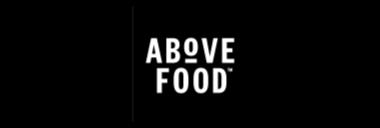SECURITIES AND EXCHANGE COMMISSION
Washington, D.C. 20549
FORM 6-K
REPORT OF FOREIGN PRIVATE ISSUER PURSUANT
TO RULE 13A-16
OR 15D-16 OF THE SECURITIES EXCHANGE ACT OF 1934
For the month of July, 2025
(Commission File No. 1-14862 )
BRASKEM S.A.
(Exact Name as Specified in its Charter)
N/A
(Translation of registrant's name into English)
Rua Eteno, 1561, Polo Petroquimico de Camacari
Camacari, Bahia - CEP 42810-000 Brazil
(Address of principal executive offices)
Indicate by check mark whether the registrant
files or will file annual reports under cover Form 20-F or Form 40-F.
Form 20-F ___X___ Form 40-F ______
Indicate by check mark if the registrant is
submitting the Form 6-K
in paper as permitted by Regulation S-T Rule 101(b)(1). _____
Indicate by check mark if the registrant is
submitting the Form 6-K
in paper as permitted by Regulation S-T Rule 101(b)(7). _____
Indicate by check mark whether the
registrant by furnishing the information contained in this Form is also thereby furnishing the information to the Commission pursuant
to Rule 12g3-2(b) under the Securities Exchange Act of 1934.
Yes ______ No ___X___
If "Yes" is marked, indicate below
the file number assigned to the registrant in connection with Rule 12g3-2(b): 82- _____.

BRASKEM S.A.
CNPJ Corporate Taxpayer
ID (CNPJ): 42.150.391/0001-70
Company Registry: 29.300.006.939
Publicly Held Company
MATERIAL FACT
PRODUCTION & SALES
REPORT
SECOND QUARTER 2025
São Paulo, July
30, 2025 – Braskem S.A. (“Braskem” or “Company”) reports to its shareholders and the market its Production
& Sales Report for the second quarter of 2025. Note that the information herein is based on preliminary data. The figures in this
report were not revised by the Company's independent auditor.
For more information, contact
Braskem’s Investor Relations Department by calling +55 (11) 3576- 9531 or emailing braskem-ri@braskem.com.br.
Contents
| 1. OPERATIONAL OVERVIEW 2Q25 |
2 |
| 2. PERFORMANCE BY SEGMENT |
3 |
| 2.1 BRAZIL/SOUTH AMERICA |
3 |
| 2.2 UNITED STATES & EUROPE |
6 |
| 2.3 MEXICO |
6 |
| 3. PETROCHEMICAL SPREADS |
8 |

| 1. | OPERATIONAL
OVERVIEW 2Q25 |

In the second quarter
of 2025, the global demand scenario was impacted by trade tensions between the United States and China, as well as uncertainties around
tariffs. These conditions impacted global trade flow and affected the price references in the international market, resulting in a reduction
compared with first quarter of 2025 of (i) 10% and 12% in the international reference prices for PE, which are used as references in the
Brazil and Mexico segments, respectively; and (ii) 4%, 6% and 7% in international references for PP, PVC and Main Chemicals, respectively,
which are used as a reference in the Brazil segment.
Additionally, the costs
of goods sold in the quarter were pressured by feedstock purchased in previous periods, when prices were higher while compared to 2Q25.
This mismatch between the cost of feedstock and sales price impacted the Company's profitability in the quarter.
In this scenario, the
Company directed efforts to optimize inventory levels, seeking higher operational efficiency.
In Mexico, Braskem
Idesa has begun its first general maintenance shutdown at its petrochemical plant since its inauguration, which negatively impacted the
production and availability of PE for sale in the second quarter.
Average utilization
rate of petrochemical crackers: in line with 1Q25, mainly impacted by higher production at the Rio de Janeiro petrochemical Complex
due to the inventory build-up in anticipation of the scheduled shutdown of this plant, expected to occur in 3Q25. This effect was offset
by (i) the continuous adjustment of production levels to meet lower demand in the period; and (ii) the lower supply of feedstock at the
São Paulo Petrochemical Complex.
In relation to 2Q24,
the increase in the utilization rate (+3 p.p.) is mainly explained by the normalization of operations at the petrochemical Complex of
Triunfo, state of Rio Grande do Sul, which was interrupted during 2Q24 due to the extreme weather event that impacted the state.

Resin’s sales
volume: in the Brazilian market, the increase (+3%) in relation to 1Q25 is mainly explained by the anticipation of purchases in the
transformation chain due to (i) lower prices in the international market during 2Q25, impacted by the uncertainties around tariffs; and
(ii) the expectation of an increase in international price references during the second half of 2025.
In relation to 2Q24,
sales volume remained in line (+1%), highlighting the increase in PVC and PE sales volume by 6% and 2%, respectively, partially offset
by the reduction in PP sales volume by 3%.

Exports were higher
compared to 1Q25 (+19%) mainly explained by the higher volume of PE and PP exports, mainly to South America due to the higher availability
of products for export.
In relation to 2Q24,
the increase (+30%) is mainly explained by the higher availability of product for export given the lower demand for PE and PP in the Brazilian
market.

Main chemicals sales
volume[1]: in the Brazilian market, remained in line while compared to 1Q25, mainly explained by the higher sales volume
of benzene and propylene due to a demand increase in the Brazilian market. This effect was partially offset by the lower sales volume
of (i) paraxylene due to the scheduled shutdown of its production unit that occurred in 2Q25; and (ii) ethylene due to the reduction in
demand in the Brazilian market during the period.
In relation
to 2Q24, the sales volume remained in line (+1%) highlighting the increase in sales volume of gasoline, toluene and benzene, given the
higher availability of product for sale due to the normalization of operations in Rio Grande do Sul, partially offset by the lower sales
volume of paraxylene due to the unit’s scheduled shutdown that occurred in 2Q25.

Exports were lower compared
to 1Q25 (-39%), mainly explained by the lower volume of exports of butadiene, benzene, paraxylene, and toluene due to the lower availability
of product for export.
[1] Main chemicals
refer to: ethylene, propylene, butadiene, cumene, gasoline, benzene, toluene and paraxylene due to the representation of these products
in the segment’s net revenue.
The decrease (-56%) compared
to 2Q24 is mainly explained by the lower volume of exports of gasoline, benzene and toluene.

Average
utilization rate of green ethylene[2]:

 lower compared to 1Q25 (-16 p.p.) mainly due to the optimization of inventories carried out in the quarter to
meet current demand.
lower compared to 1Q25 (-16 p.p.) mainly due to the optimization of inventories carried out in the quarter to
meet current demand.
In relation
to 2Q24, the increase (+36 p.p.) is explained by the normalization of operations at the Triunfo Petrochemical Complex, in Rio Grande do
Sul, which were interrupted during 2Q24 due to the external weather event that impacted the state.

Green PE
(I’m greenTM biobased) sales volume: increased compared to 1Q25 (+24%) mainly due
to higher demand from new and existing customers.
The increase compared to 2Q24
(+10%) is mainly explained by the higher availability of the product for sale, after the normalization of operations at the Triunfo Petrochemical
Complex, which had been interrupted due to the weather event that occurred in 2Q24.
² Due to the review of green
ethylene production capacity, starting in 2Q25, the calculation of the utilization rate considers the production capacity of 275 thousand
tons per year.

| 2.2 | UNITED STATES & EUROPE |
Average
utilization rate of PP plants[3]: remained in line compared to 1Q25, mainly due to the
increase in production in the United States driven by the seasonal increase in demand, explained by inventory buildup in the chain in
anticipation of the hurricane season in the region, partially offset by lower production in Europe, mainly because of the lower availability
of feedstock caused by operational adjustments made by suppliers.
Compared to 2Q24, the
utilization rate was lower (-4 p.p.) mainly due to the lower supply of propylene in Europe in 2Q25.

PP sales
volume: increased compared to 1Q25 (+2%) mainly due to higher seasonal demand in the United States.
Compared to 2Q24, sales volume
remained in line (+1%).
[3] 1Q25 polypropylene
capacity updated to consider total nameplate capacity of 2,021 kt/year in the United States.

Average utilization
rate of PE plants: lower compared to 1Q25 (-35 p.p.) and 2Q24 (-34 p.p.), mainly due to (i) the beginning of the general maintenance
planned shutdown at the Braskem Idesa Petrochemical Complex; and (ii) lower ethane supply due to operational issues at PEMEX, which was
around 19.6 thousand barrels per day compared to 28.3 thousand barrels per day in 1Q25 and 26 thousand barrels per day in 2Q24.
The volume of ethane supplied
through the Fast Track solution was around 26 thousand barrels per day, compared to 21.3 thousand barrels per day in 1Q25 and 23 thousand
barrels in 2Q24.

PE sales volume: lower
compared to 1Q25 (-16%) and 2Q24 (-33%), mainly due to the lower availability of products for sale, explained by lower production, as
mentioned above.


BRAZIL/SOUTH AMERICA
| · | PE Spread[4]:
lower compared to 1Q25 (-4%). |
| o | The PE price in the USA was lower (-10%)
compared to 1Q25, mainly impacted by lower demand due to uncertainties about import tariffs. |
| o | The price of naphtha ARA decreased (-14%)
compared to 1Q25, explained by the reduction (-10%) in the price of oil, mainly due to (i) the instability of the geopolitical scenario,
and; (ii) the increase in global supply, due to the gradual resumption of global production levels. |
| o | Compared to 2Q24, the spread reduced (-6%)
mainly due to lower PE prices in the USA (-11%) due to the increase in global PE supply, mainly in China. |
| · | PP Spread[5]:
increase compared to 1Q25 (+17%). |
| o | The price of PP in Asia decreased
(-4%) compared to 1Q25, mainly explained by the reduction in demand in the region, due to the uncertainties around tariffs. |
| o | The price of naphtha ARA decreased
(-14%) compared to 1Q25, as explained previously. |
| o | In relation to the same quarter
of 2024, the spread was higher (+14%) mainly due to the lower price of naphtha ARA (-18%), as previously mentioned. |
| · | PVC Par Spread[6]:
decreased compared to 1Q25 (-5%). |
| o | The PVC price was lower compared to 1Q25 (-6%),
mainly impacted by (i) lower demand from the construction sector, due to interest rate levels and global macroeconomic factors; and (ii)
the higher price of caustic soda (+6%), caused by the higher volume of exports, explained by the reduction in demand in the region. |
| o | Compared to 2Q24, the Par PVC spread was lower
(-4%), mainly impacted by the decrease in Par PVC prices (-13%), predominantly explained by the increase in supply, compared to the same
period of the previous year, caused by higher operating rates with new PVC production capacities coming online. |
| · | Spreads on Main
Chemicals[7]: increase in
comparison with 1Q25 (+5%). |
| o | The price of naphtha decreased (-14%), as
previously mentioned, offsetting the reduction in the price of the main chemicals (-7%) in relation to the previous quarter, mainly due
to (i) the lower price of benzene (-17%), caused by scheduled and unscheduled shutdowns at styrene plants in the United States that occurred
in the period; and (ii) the reduction in the price of propylene (-16%) in the USA, explained by the uncertainties around tariffs. |
| o | Compared to 2Q24, the Main Chemicals spread
was lower (-19%), influenced by the reduction in gasoline prices (-20%); of toluene (-24%), benzene (-36%), and propylene (-19%). |
[4]
(US PE Price – naphtha ARA price)*82%+(US PE Price – 50% US ethane price – 50% US propane
price)*18%.
[5]
Asia PP price – Naphtha ARA price.
[6]
PVC Price: Asia PVC Price + (0.685*US Caustic Soda) - (0.48*Europe Ethylene) - (1.014*Brent).
[7]
Average price of base chemicals (Ethylene (20%), Butadiene (10%), Propylene (10%), Cumene (5%), Benzene (20%),
Paraxylene (5%), Gasoline (25%) and Toluene (5%), based on Braskem’s sales volume mix) – naphtha ARA price.
UNITED STATES AND EUROPE
| · | PP
Spread US[8]: remained in line with 1Q25. |
| o | The price of PP decreased (-11%) in relation
to 1Q25 due to the lower price of propylene in the USA (-16%), mainly explained by the increase in supply, due to the normalization of
utilization rates in the region during the period. |
| o | In relation to the same quarter of the previous
year, the spread remained in line. |
| · | PP
Spread Europe[9]: increase (+7%) compared to 1Q25. |
| o | The price of PP and propylene in Europe remained
in line when compared to 1Q25. |
| o | Compared to 2Q24, the spread was lower (-16%)
mainly impacted by the lower PP price in Europe (-6%). |
MEXICO
| · | PE Spread North
America[10]: lower compared
to 1Q25 (-12%). |
| o | The PE price in the US decreased (-12%) compared
to 1Q25, as previously explained. |
| o | The price of ethane decreased (-12%) compared
to 1Q25, mainly explained by the reduction in exports, especially in June, caused by the impact of new licensing requirements imposed
by the United States on Chinese vessels. |
| o | In relation to the same period of the previous
year, the spread was lower (-22%), mainly impacted by the higher price of ethane (+25%), due to the increase in the export capacity of
ethane and natural gas in the region during the period. |
[8]
U.S. PP – U.S. propylene price
[9]
EU PP – EU propylene price
[10]
U.S. PE – U.S. ethane price
SIGNATURES
Pursuant
to the requirements of the Securities Exchange Act of 1934, the registrant has duly caused this report to be signed on its behalf
by the undersigned, thereunto duly authorized.
Date: July 30, 2025
| |
BRASKEM S.A. |
| |
|
|
|
| |
|
|
|
| |
By: |
/s/ Felipe Montoro Jens |
| |
|
|
| |
|
Name: |
Felipe Montoro Jens |
| |
|
Title: |
Chief Financial Officer |
DISCLAIMER ON FORWARD-LOOKING STATEMENTS
This Material Fact may contain forward-looking statements. These statements are not historical facts, but rather are based on the current
view and estimates of the Company's management regarding future economic and other circumstances, industry conditions, financial performance
and results, including any potential or projected impact regarding the geological event in Alagoas and related legal procedures on the
Company's business, financial condition and operating results. The words “project,” “believe,” “estimate,”
“expect,” “plan”, “objective” and other similar expressions, when referring to the Company, are used
to identify forward-looking statements. Statements related to the possible outcome of legal and administrative proceedings, implementation
of operational and financing strategies and investment plans, guidance on future operations, the objective of expanding its efforts to
achieve the sustainable macro objectives disclosed by the Company, as well as factors or trends that affect the financial condition, liquidity
or operating results of the Company are examples of forward-looking statements. Such statements reflect the current views of the Company's
management and are subject to various risks and uncertainties, many of which are beyond the Company’s control. There is no guarantee
that the events, trends or expected results will actually occur. The statements are based on various assumptions and factors, including,
but not limited to, general economic and market conditions, industry conditions and operating factors, availability, development and financial
access to new technologies. Any change in these assumptions or factors, including the projected impact from the joint venture and its
development of technologies, from the geological event in Alagoas and related legal procedures and the unprecedented impact on businesses,
employees, service providers, shareholders, investors and other stakeholders of the Company could cause effective results to differ significantly
from current expectations. For a comprehensive description of the risks and other factors that could impact any forward-looking statements
in this document, especially the factors discussed in the sections, see the reports filed with the Brazilian Securities and Exchange Commission
(CVM). This Material Fact does not constitute any offer of securities for sale in Brazil. No securities may be offered or sold in Brazil
without being registered or exempted from registration, and any public offer of securities carried out in Brazil must be made through
a prospectus, which would be made available by Braskem and contain detailed information on Braskem and its management, as well as its
financial statements.

















 lower compared to 1Q25 (-16 p.p.) mainly due to the optimization of inventories carried out in the quarter to
meet current demand.
lower compared to 1Q25 (-16 p.p.) mainly due to the optimization of inventories carried out in the quarter to
meet current demand.






